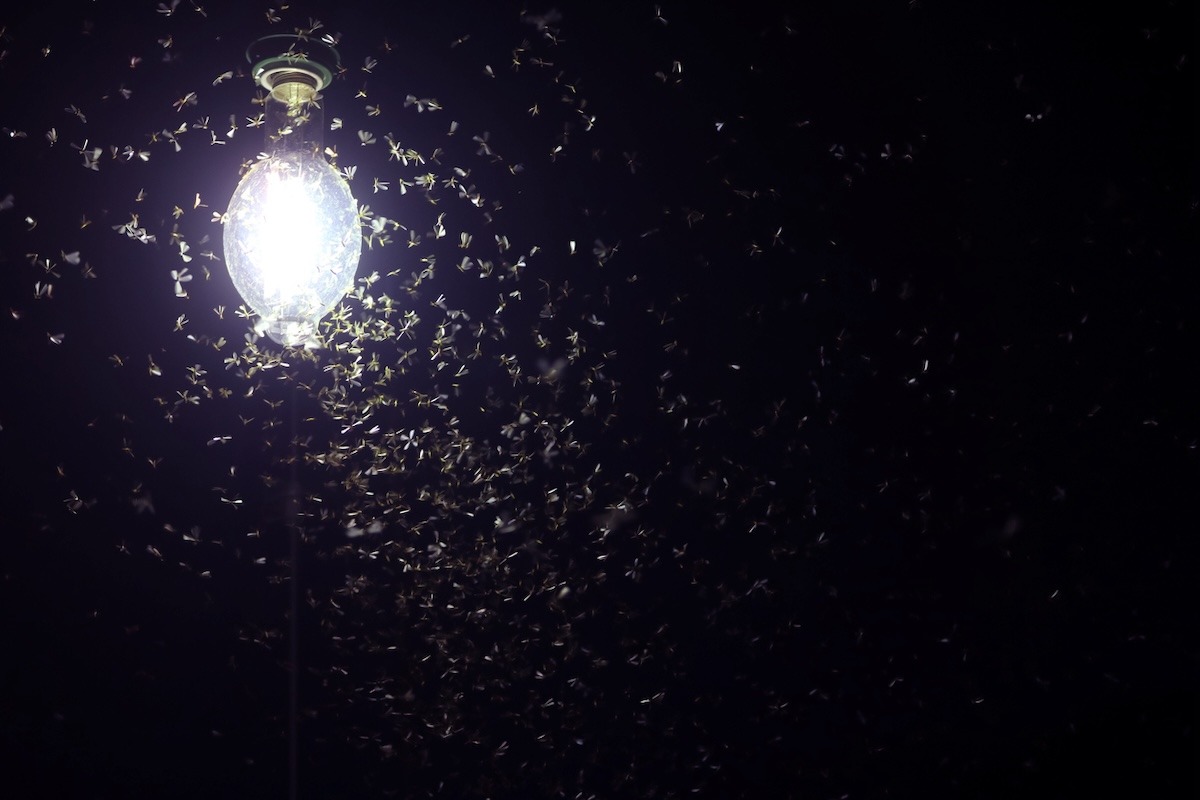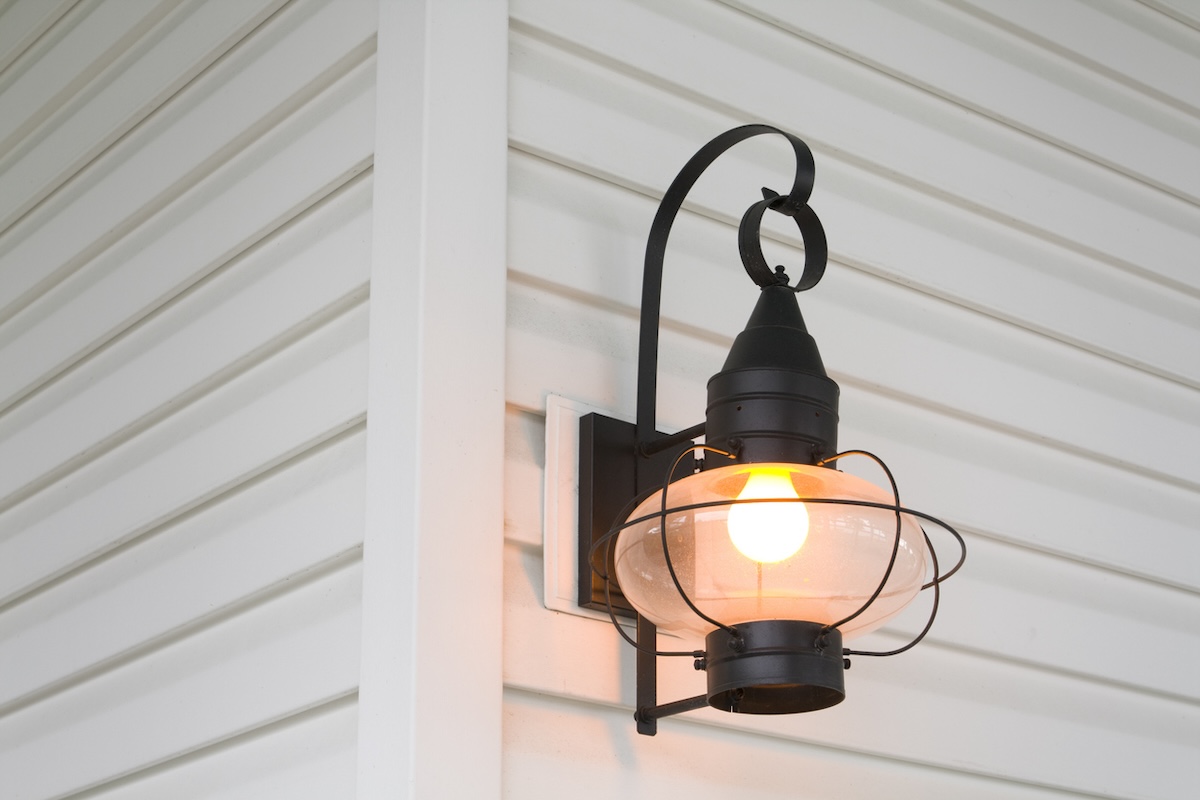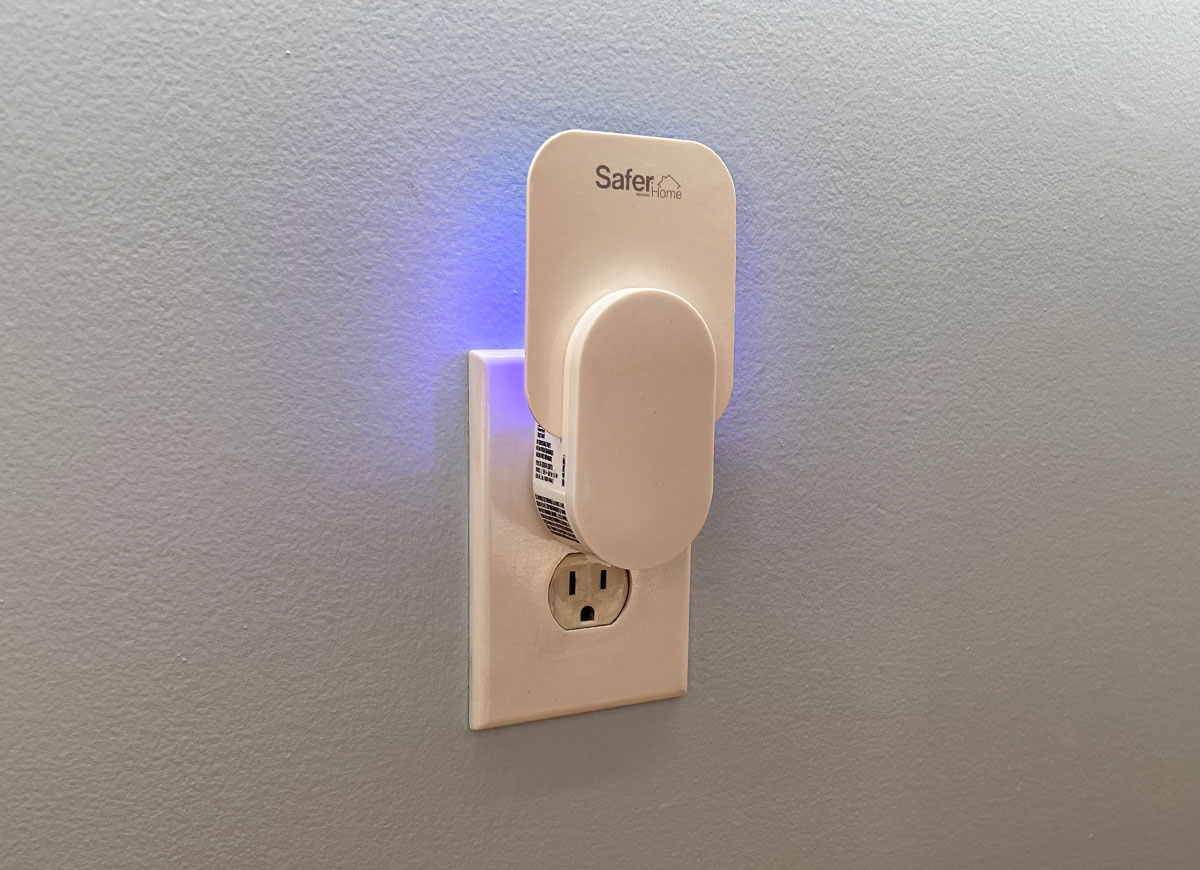

We may earn revenue from the products available on this page and participate in affiliate programs. Learn More ›
Q: The incandescent bulb in my porch light burned out and I want to replace it with a more efficient LED, but I’m concerned it’ll bring more insects around my house. Do LED lights attract bugs?
A: The simple fact is that bugs are attracted to light—like moths to a flame, as the old saying goes. Phototaxis identifies how bugs react to light, either moving toward it or away from it. Numerous theories abound about why they’re drawn to light. Kyle Koch, insect diagnostician at the University of Nebraska-Lincoln, says that while we don’t fully understand the attraction, there seems to be a relationship between flying insects and using light for navigation or orientation.
Why does this matter? Light pollution is a serious concern. Overuse of artificial light has a detrimental effect on wildlife as well as human health, and it contributes to climate change. Evidence suggests that switching to certain LEDs for outdoor lighting can help lessen the impact.
Many insects are attracted to light and possibly heat.
While some experts speculate that the heat put out by artificial lights attracts bugs, Koch is skeptical. “Heat may play a role, but we’re not sure how much it really attracts them.” Instead, he believes that positive phototaxis species (flies, moths, mosquitoes, etc.) are more attracted to specific wavelengths of light, or colors.
Either way, LEDs generate little heat and some emit the “wrong” colors for insects compared to other types of bulbs. Koch explains that this is especially true for nocturnal insects, “who see only two ranges on the visible spectrum.”
CFLs and LEDs attract fewer bugs than incandescent light bulbs.
Studies show that traditional incandescent bulbs are the worst choice for outdoor use because they attract more bugs than most other lights. Some countries have outlawed them due to inefficiency.
Compact fluorescent lights (CFLs) exhibit higher efficiency than incandescents, but are hazardous waste when discarded. Yellow CFLs are often used in so-called bug lights because they’re less attractive than many other lights.
Longer-lasting and more energy-efficient than both incandescents and CFLs, outdoor LED light bulbs also can be less enticing to insects with the right wavelengths.
Experts agree that some LED colors attract more insects than others.

“Wavelengths produce a color,” Koch explains. The visible spectrum for humans is roughly 400 to 700 nanometers (purple to red). Insects, however, see two ranges: 300 (ultraviolet) up to around 650 (just short of red). “No insects see red.”
According to a 2021 study conducted by UCLA and the Smithsonian Conservation Biology Institute, warmer LED light in the yellow-orange-red range is the least attractive to bugs, while bright white, blue, and ultraviolet lights are the most appealing to them.
While the only light bulbs that don’t attract bugs are those that are switched off, red or amber LEDs, like this highly rated option available at Amazon, are more environmentally friendly options for illuminating a home’s exterior.
RELATED: Beware of These 14 Pests That Only Come Out at Night
Outdoor bug zappers that employ light, LED or otherwise, are counterproductive.
Bug zappers typically broadcast ultraviolet light to attract flying insects, which are then electrocuted. Often used in controlled outdoor areas at night, a bug zapper light can be quite effective in reducing the number of nuisance insects. However, a frequently cited survey published in the University of Delaware’s Entomological News concluded that bug zappers have little effect on mosquito populations overall.
Some of the downsides of bug zappers include their limited range, the fact that they aren’t very effective during daylight hours, and that they’re non-discriminate, attracting beneficial bugs as well. Koch, however, doesn’t consider this a “big issue,” because, he says, “Major pollinators are diurnal.” Therefore, they’re not typically out at night, where they could be lured to their death by a bright, noisy bug zapper.
For indoor environments, LED lights that attract bugs can be an effective pest control solution.

Inevitably, insects find their way inside—particularly as outdoor temperatures fall—and quickly become unwanted guests. Unlike some bug light bulbs and LED lights that produce a warmer yellow-to-red light that bugs don’t like, some indoor lights purposely attract flying insects and trap them.
While less obtrusive than a bug zapper, an indoor plug-in light with a trap works in a similar fashion, except that instead of electrocuting bugs, it captures them on a hidden glue card. As with outdoor bug zappers, it’s not the UV light in these interior traps that kills the insects. The light merely draws them in.
RELATED: 13 Time-Tested Tricks for a Bug-Free Backyard
Final Thoughts
Remember, any light source can potentially attract insects, no matter what wavelength it emits. However, lower wavelengths correlate with warmer light, and warmer LEDs, such as yellow and amber, will attract fewer insects, thereby making summer evenings outdoors more pleasant.
Most LED lights output very little UV light—a light with a low wavelength that attracts insects. This generally makes LEDs an optimal choice for outdoor lighting. Conversely, there are LED lights with higher wavelengths corresponding with cooler light in the white and blue range. These will draw more bugs to them, creating a nuisance for homeowners.
RELATED: 30 Things in Your House That Are Attracting Bugs and Rodents
